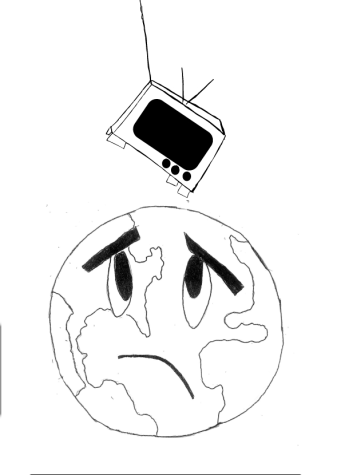Gassing up renewable energy, not the atmosphere
December 15, 2021
Nestled in Marin County’s city of Novato, east of Highway 101, lies Redwood Landfill and Recycling Center. Much like any other disposal depot, horizons of garbage and hills of trash emit various toxic air pollutants — the most prominent being methane. Nevertheless, its use of this climate-changing-culprit is what sets Redwood Landfill apart. Instead of allowing the methane to escape out into the atmosphere, it is converted into clean energy. This is done through a conversion process where the methane is recaptured and processed. Simplified, landfill gas (LFG) is extracted from collection wells and sent through extraction and cleaning equipment. It is then converted into electricity turbines or engines and reaches its final destination, an electrical grid.
The clock on climate change has been ticking for quite some time now. Although the world is already in a slight spiral on this front, increasing the number of plants that transform their methane to energy would mean slowing down the world’s inevitable fate. Not to mention, it makes use of what would otherwise be an aggressive pollutant. Considering how harmful methane is, this process of turning landfill gas into energy and preventing more of it from entering the atmosphere is thoroughly underutilized.

While landfills produce both carbon dioxide and methane in roughly equal amounts, the second outshines its counterpart in the contest for “worst gas.” With its superior heat-trapping abilities, methane is 25 percent more potent, according to the United States Environmental Protection Agency. Additionally, it was the second biggest contributor of 2019 greenhouse gas emissions and landfills provided the third-largest source of this methane. Turning landfill methane into power would minimize the impact it has on the environment.
Greenhouse gases are also emitted from other sources, such as transportation and agriculture, contributing to one of many crises the world faces: the dwindling amount of fossil fuels. Octopus Energy, a British sustainable energy group, states that it is likely all fossil fuels will be used up by 2060. This is where the importance of landfill gas energy (LGE), the converted landfill gas, comes in; it is renewable and consistent, as confirmed by Marin Clean Energy, making it a replacement for fossil fuels. The system does not rely on unpredictable factors such as sunlight or wind, meaning it can operate 24/7. It also cannot be depleted, unlike fossil fuels. Just when nature seems to have run out of “food,” LGE is the ingredient hiding in the back of the fridge. Simply put, LGE is science’s version of when mothers say, “There’s food at home.” Scouring the back of the fridge to create any resemblance of a meal is not much different from searching for solutions to lower methane emissions. The ingredients are most definitely all there; it just takes a little looking. LGE is a valid option that should be made by garbage centers much more often, as it would be a significant benefit to the environment.
The technology itself is relatively new, meaning that there are still quite a few kinks to work out. A major obstacle is the price tag. Processing LFG to successfully create energy must be done safely and, therefore, is typically costly. As acknowledged by the Climate & Clean Air Coalition, effectively executing these projects poses a financial challenge.
Despite this, the long term consequences of continuing without LFG must be weighed. The expenses pale in comparison to the potential threat of an economy completely barren of fossil fuels. From exports, imports and what goes into making these goods, the use of fossil fuels is always present. Such heavy dependence on this type of energy is far from sustainable. Converting the methane from our landfills is a much better alternative than allowing it to escape into the atmosphere. The National Oceanic and Atmospheric Administration found that 2020 had the largest annual increase of atmospheric methane since the beginning of their measurements in 1983. Not to mention, methane is a highly flammable gas and risks causing landfill fires or explosions. Aside from further destroying the environment, neglecting the gas is dangerous in general. The Redwood Landfill is just a glance into what should become the new standard, but as of now, only 55 of the 300 landfills in California have operational LGE projects. With the potential to slash air pollution, help ozone and smog formation and improve the environment overall, it is time to transition to using more LGE.























